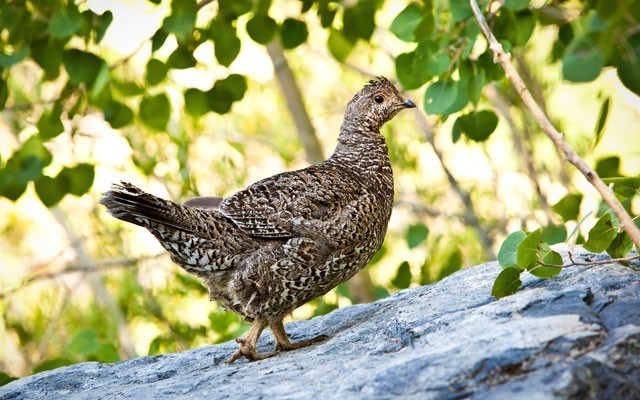Whistler's Christmas bird count details are in, but not even some interesting sightings can change the fact that the count was disappointing.
Fifteen field counters and eight good Samaritans who watched their backyard feeders found a surprising 50 species, about nine to 10 above the 25-year average.
In the mix were our first White-crowned Sparrows and our second Great Gray Owl. While numbers on most species were way down, there was a surprising new high count on Song Sparrows (20), and regionally Whistler had the highest count on Lesser Scaup (ducks) at seven and, not surprisingly, Gray Jays (37).
However, that is the end of the good news; only 747 birds were seen, our second-lowest tally in 26 years, well below our long-term average of 2,385 birds.
All of the data for the corridor counts has been filed with our national authority, Bird Studies Canada.
Lower Howe Sound finally rounded up all the data from the various island settlements in their count area to complete the big picture stretching through the Coast Mountains to leeward Hat Creek and Ashcroft-Cache Creek.
Some surrounding area were slightly above the 13-year average in those numbers while others were slightly below on species and significantly down on the number of birds. In all, 120 species were seen (126.9 on average) and 26,317 birds were counted against an average of 31,540.7.
One species was added to the list, a Harris Sparrow at Pemberton-Mount Currie. Nonetheless, there are snippets of good news. New all-time high counts were recorded for: Canada Goose (852 birds); Sooty Grouse (two — one at Whistler); Red-throated Loon (nine); Northern Goshawk (two, and the other in count week); Mew Gulls (621); Eurasian Collared-dove (427 – an invasive species); Great Gray Owl (two, the other was at Ashcroft); Northern Pygmy Owl (17, nine at Lillooet); Red-breasted Sapsucker (20); Pileated woodpecker (45); Steller's Jay (583); Northwest Crow (1,324); Spotted Towhee (458); Gray-crowned Rosy-finch (45); White-winged Crossbill (77); and American Goldfinch (149). Some of the above were indeed surprising.
On the other side of the coin, only three species were found at all eight count locations: Bald Eagles (990); Common Ravens (802); and Black-capped Chickadees (849).
On the marine front, all species, with minor exceptions, were down with loons, grebes and cormorants taking on big reductions in usual numbers and some of the sea duck species not showing up at all.
For other groups, the rough picture is as follows: Upland Game Birds (the usual average low); Raptors (with the exception of Bald Eagles at a low 990 — the others are on average to slightly above); Gulls (definitely down in total numbers); Owls (above); Woodpeckers (above); Jays and Crows (above); Chickadees and other small birds (decrease); Thrushes (decrease for all except a doubling on Varied Thrush); Sparrows (increases for all except Juncos); Blackbirds (higher as opposed to declines elsewhere); and Finches (up and down according to the species; Pine Siskins are significantly lower).
The top 10 in terms of numbers of each seen are as follows: No. 1: Glaucous-winged Gulls (4,536, and 4,217 at Squamish); No. 2: Pine Siskin (1,392, and 639 at Pemberton); No. 3: Dark-eyed Oregon Juncos (1,362 and 433 at Lower Howe Sound); No. 4: Northwest Crow (1,324, and 451 at Squamish); No. 5: European Starling (1,298, and 511 at Cache Creek); No. 6: Barrow's Goldeneye (1,080, and 1,012 at Lower Howe sound); No. 7: Surf Scoter (1,077 and 1,071 at Lower Howe Sound); No. 8: Bald Eagle (990 and 669 at Squamish); No. 9: Canada Goose (852 and 483 at Squamish); and No. 10: Black-capped Chickadee (949, and 302 at Lillooet).
There are also several local highlights not mentioned anywhere above, but I will mention the lone and only Wood Duck seen at D'arcy, which is by far the most aesthetic location for a bird count afterparty!
The Whistler Naturalists are a non-profit volunteer group dedicated to increasing local knowledge of the natural world in the Whistler area. For more information, or to get involved, please visit WhistlerNaturalists.ca.
Call for volunteers — The Naturalists are looking for volunteers to help organize upcoming events and write Naturespeak articles. For more information please contact Kristina at kswerhun@hotmail.com.




